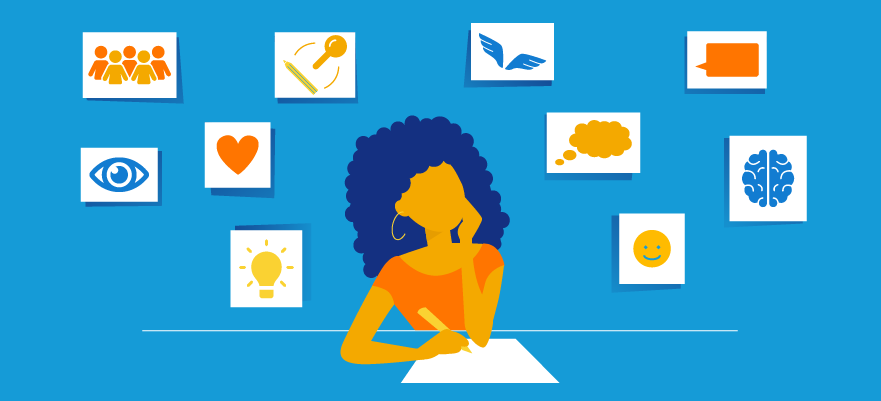Qualities of a LX designer
A learning experience designer is a creative professional who uses design skills, methods and tools to design experiences that enable people to learn. What exactly do you have to be able to do to be be successful at that?

Here are eight things a learning experience designer should be able to do:
1. Use creativity as a driving force.
LXD is a design discipline. As a designer, you use your creative talent to come up with original ideas, conceptualise these ideas and find the right shape or form for your design. Creativity is not only the spark that ignites a design session, it’s also the fuel for the complete design process.
2. Have a creative and analytical mindset.
The design process of a learning experience requires different mindsets. You are switching between analytical and creative as you do your research, create, test and improve your design. The ability to adapt your mindset allows you to be effective throughout the design process and get the best of both worlds.
3. Let go of what you know.
We all have preconceived notions of what learning should be like. These notions are based on our own experiences in school and at work. It’s easy to fall into the trap of designing similar experiences and not benefit from the endless opportunities to shape the way we learn. Try and let go of what you know and use your creative freedom to create unique learning experiences that haven't been made before.
4. Focus on the learner.
Human centered design is a big part of creating effective and engaging learning experiences. Being able to empathise with the learner enables you to design a more personal learning experience that really works. Never forget that the learner is always the most important person in your work.
5. Incorporate (neuro)scientific insights.
Understanding how our brain works and how we learn enables you to create designs that are effective in helping the learner reach their goals. You have to be able to learn from and work with (neuro)scientists to incorporate their precious insights and knowledge into your designs.
6. Be both practical and imaginative.
LX designers push boundaries and try to find innovative and elegant solutions for complex problems. At the same time, you want to keep things as simple and as practical as possible for your design to work in a real-life situation. Try to balance your craziest ideas with a healthy dose of realism.
7. Choose the right technology.
Learning is not about technology, it’s about people and their goals. The technology you choose is based on what will enable the learner to reach their desired learning outcome. Choosing the technology that serves this purpose is a vital part of designing a great learning experience. Using technology is always a means to an end and not a goal in itself.
8. Align different perspectives.
Am LXD project can involve a variety of stakeholders, like learners, clients, experts, scientists, software developers. They all have different needs and desires. It is your responsibility to unite these people by aligning their perspectives and creating a learning experience that works for all of them.
Finally
The next steps in your LX design journey
After reading the LXD Fundamentals, the basics, you might be curious to take the next step in learning more about learning experience design and how to apply it.
